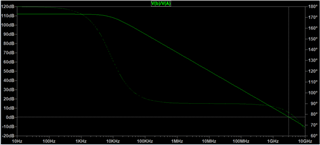Other Parts Discussed in Thread: LM358, LM393, TL431, TLV3601, TLV3501, TLV3604, LM360, OPA855, OPA843, OPA818
Hello, I am looking for an IC to use as error amplifier in a custom voltage regulator, supposed to perform well at light loads. I am looking for an amplifier with wide band, whose dominant pole does not superpose with the power pole almost below 100Hz. I downloaded the spice model for LM393A and it seems to perform very well. Dominant pole around 10kHz and then a nice -20dB/dec slope all the way down to 0db with 80deg phase margin.
My question now if you have a plot showing open loop gain and phase of LM393A against frequency which I can compare to simulation results.
I would also appreciate suggestions about other parts that might be suitable error amplifiers to drive a PMOS if you got some in mind.
Best regards,
Franco Maggi


